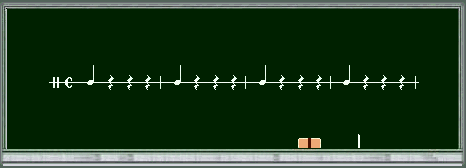Buzzing is one of the ways to practice brass instruments, but I feel that some people place too much importance on it or misunderstand it. No matter what practice method you use, it will not be effective unless the method, amount of practice, and timing are correct.
Buzzing is making a buzz sound, like the buzz of a bee or other flying insect, using only your lips or a mouthpiece. The sound of brass instruments, whether it's a trumpet or a tuba, is based on this sound (vibration).
Close your upper and lower lips (this is the key) and let out a thin stream of air from the gap in the center. At this time, be careful not to push your lower lip outward. When viewed from the front, the lower lip should look like a straight horizontal line, and the rest of it should be hidden by your upper lip (but it's not rolled inward like a clarinet).
When students first start buzzing, it may be easier to get the feel of it if they exhale in a single "puff," like students're blowing a watermelon seed. It's a good idea to start with a low sound that makes student's lips tremble. After that, try to vibrate only the smallest part of their lips in the center.
Rather than trying to hold the sound long from the beginning, practicing this rhythm with a metronome helps students to coordinate their embouchure and breath timing.

Once student can make a sound for even a moment, repeat it several times to gradually lengthen it, and explain that they can change the pitch by slightly changing the size of the opening (the tension of the lips around the opening) in the center of your lips (called the aperture).
Student can play the part and melodies of each instrument by buzzing only with the mouthpiece, but at this stage, there is no point in practicing buzzing for long periods of time (especially loudly), but it may actually cause them to develop bad habits of tensing their mouth and body.
Some tuba players said, "If students only practice buzzing, it will sound like buzzing even when they are playing with an instrument."
The resistance to the breath is completely different when buzzing with only the mouthpiece and when playing with an instrument, and it is much easier to make a sound with an instrument. When not using an instrument, student tend to have to exert a lot of force into their breath or force their lips to open too narrowly. For this reason, some people use their fingers to partially cover the tip of the mouthpiece when buzzing with a mouthpiece to create resistance to the breath. There are also tools that allow student to set the mouthpiece in the same position as when playing an instrument, with the tip of the mouthpiece partially covered.
It may be easier to practice if students attach a 10-20cm piece of hose with matching inner diameter to the shank
 of the mouthpiece.
of the mouthpiece. For students who have just started playing an instrument, once they have grasped the feeling of making sound by vibrating their lips, I think it is much more fun and effective to practice with the instrument on and making sound.
Before playing the instrument for the first time, have the student listen to the pitch that the instrument should produce (F or B¢õ for a B¢õ instrument such as a trumpet) on a piano or other device so that they have a target pitch to aim.
After they can produce normal sound on the instrument (probably after a few weeks of practice), it is common to buzz with a purpose to make it easier to play, and by that time the student should already have a certain image of the tone in their head and be able to control their breath and embouchure on their own.
I have heard a story about a student at a music school who had his buzzing checked at every lesson to correct the bad embouchure he had acquired by high school.
Even during an ensemble, you can have one student from each section play normally on their instrument while the other students buzz along to the sound.
However, I think that students who have just started practicing should only buzz a few times at the beginning of the day for a few seconds each time, and then practice making sounds normally on the instrument.
During wind ensemble practice, I often see band members practicing using only the mouthpiece of a clarinet or saxophone (with a reed attached, of course), in the same way as brass buzzing, but this is completely different from brass buzzing and is almost meaningless.